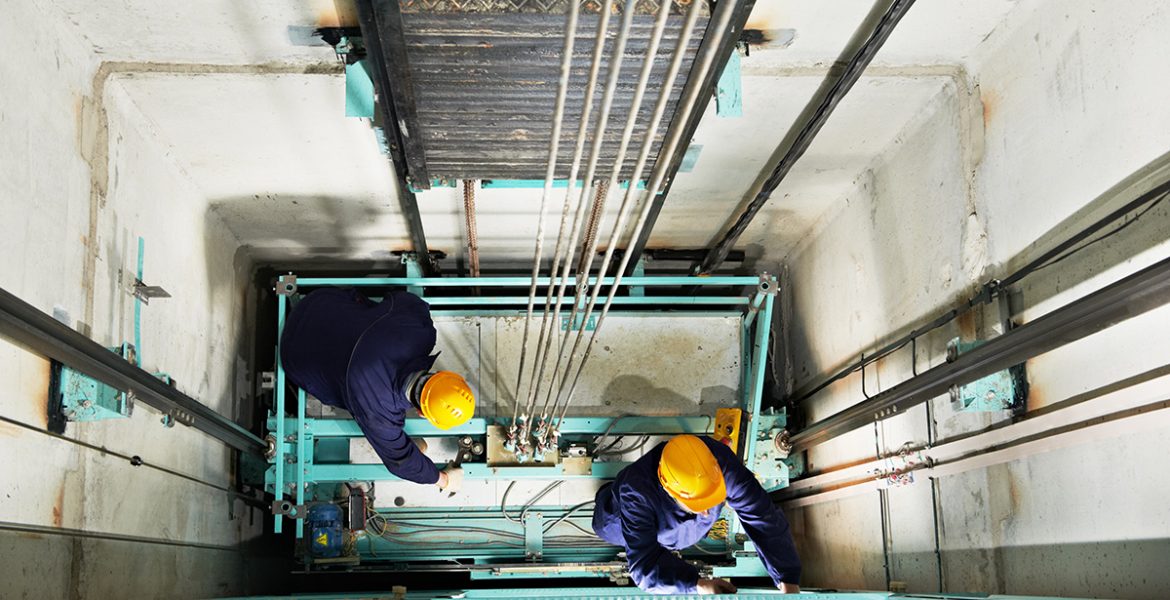Elevate Your Solution: Choosing Lift Maintenance Services and Repair Companies Near Me
Elevate Your Solution: Choosing Lift Maintenance Services and Repair Companies Near Me
Blog Article
Comprehensive Guide to Elevator Equipments and Their Maintenance
Browsing the elaborate world of elevator systems and their maintenance is a task that requires accuracy and understanding. From the numerous types of lift systems in usage to the careful adherence to safety policies, the upkeep of these vertical transport gadgets is a diverse undertaking.
Kinds of Lift Equipments
Elevator systems come in numerous types, each developed to match particular building needs and user needs. The most common kinds consist of hydraulic lifts, grip elevators, machine-room-less elevators, and vacuum cleaner elevators. Hydraulic lifts are suitable for low-rise structures and use a hydraulic piston to move the elevator cars and truck. Grip lifts, on the other hand, are extra suited for skyscrapers and utilize steel ropes and counterweights to move the cars and truck. Machine-room-less lifts are a space-saving option as they do not require a separate equipment room for the elevator machinery. Vacuum cleaner lifts, an extra contemporary innovation, usage atmospheric pressure differentials to move the cars and truck within a clear tube.
Each sort of elevator system has its very own benefits and disadvantages, making it crucial for structure owners and programmers to meticulously consider their certain needs prior to picking the most appropriate option. Factors such as constructing height, area availability, power effectiveness, and budget plan restrictions all play a considerable duty in determining the most effective lift system for a particular structure.
Typical Upkeep Issues
Regular upkeep of lift systems is important to guarantee smooth operation and lengthen their lifespan. In spite of regular upkeep, lift systems can still experience typical upkeep problems that need to be without delay resolved to protect against disruptions in solution. One of one of the most regular concerns is door malfunctions. Lift doors might obtain misaligned, bring about problems with opening and closing effectively. This can create delays and safety and security hazards, needing prompt focus from upkeep specialists. Another common issue is connected to the elevator's leveling precision. If the elevator doesn't align appropriately with the floors, passengers might experience tripping threats and pain. Additionally, issues with the control system, such as sensing unit issues or electrical problems, can trigger the lift to breakdown or quit working completely. Regular evaluations and positive upkeep can help identify and solve these usual maintenance problems before they intensify and affect the overall efficiency of the elevator system.
Safety Regulations and Conformity
Sticking to strict safety and security policies and making sure conformity with market standards are paramount for preserving the functional integrity of lift systems. Elevators go through a comprehensive set of safety and security policies to safeguard passengers, maintenance employees, and the public. Governing bodies such as the Occupational Security and Health And Wellness Administration (OSHA) in the United States and the European Lift Association (ELA) in Europe establish standards that cover various aspects of elevator layout, setup, operation, and maintenance.
Conformity with these laws is not only a legal requirement however likewise a moral responsibility for structure owners and lift maintenance firms. Regular examinations, upkeep checks, and adherence to safety and security protocols described in the laws are crucial to ensure the safe and reliable operation of elevator systems.
Best Practices for Maintenance

Building proprietors should likewise consider investing in modernization upgrades to boost the efficiency and safety and security of their lift systems. By complying with these best techniques, lift systems can run efficiently and securely, giving dependable upright transportation for passengers.

Advanced Technologies for Efficiency
Carrying out innovative innovations in lift systems can substantially boost functional effectiveness and passenger experience. These systems enable guests to input their wanted flooring prior to entering the lift, which after that directs them to the most effective car.
Furthermore, the combination of clever sensors and predictive click for source upkeep abilities has reinvented lift maintenance. These sensors can identify potential issues before they escalate, allowing aggressive maintenance treatments and lessening downtime. In addition, using regenerative drives and energy-efficient elements helps in reducing power usage and operating expenses in elevator systems.
Moreover, the application of cloud-based surveillance and remote diagnostics click to investigate enables real-time monitoring of elevator efficiency and instant troubleshooting of any kind of malfunctions. This aggressive approach not just boosts system reliability yet likewise improves the total individual experience by guaranteeing uninterrupted and smooth elevator procedures.
Final Thought
In verdict, understanding the different kinds of lift systems, usual maintenance concerns, security policies, finest maintenance techniques, and advanced technologies for efficiency is crucial for ensuring the smooth operation of elevators. By sticking to safety and security laws and applying best practices for upkeep, structure owners can extend the life-span of their lift systems and ensure the safety and security of travelers. It is essential to stay updated on the most up to date advancements in elevator technology to boost efficiency and reliability.
The most usual kinds consist of hydraulic elevators, traction lifts, machine-room-less elevators, and see it here vacuum elevators. Hydraulic lifts are optimal for low-rise buildings and use a hydraulic piston to relocate the lift auto. Machine-room-less elevators are a space-saving alternative as they do not need a different equipment space for the lift machinery. Routine inspections and proactive maintenance can help identify and settle these common upkeep issues before they intensify and influence the overall performance of the elevator system.

Report this page